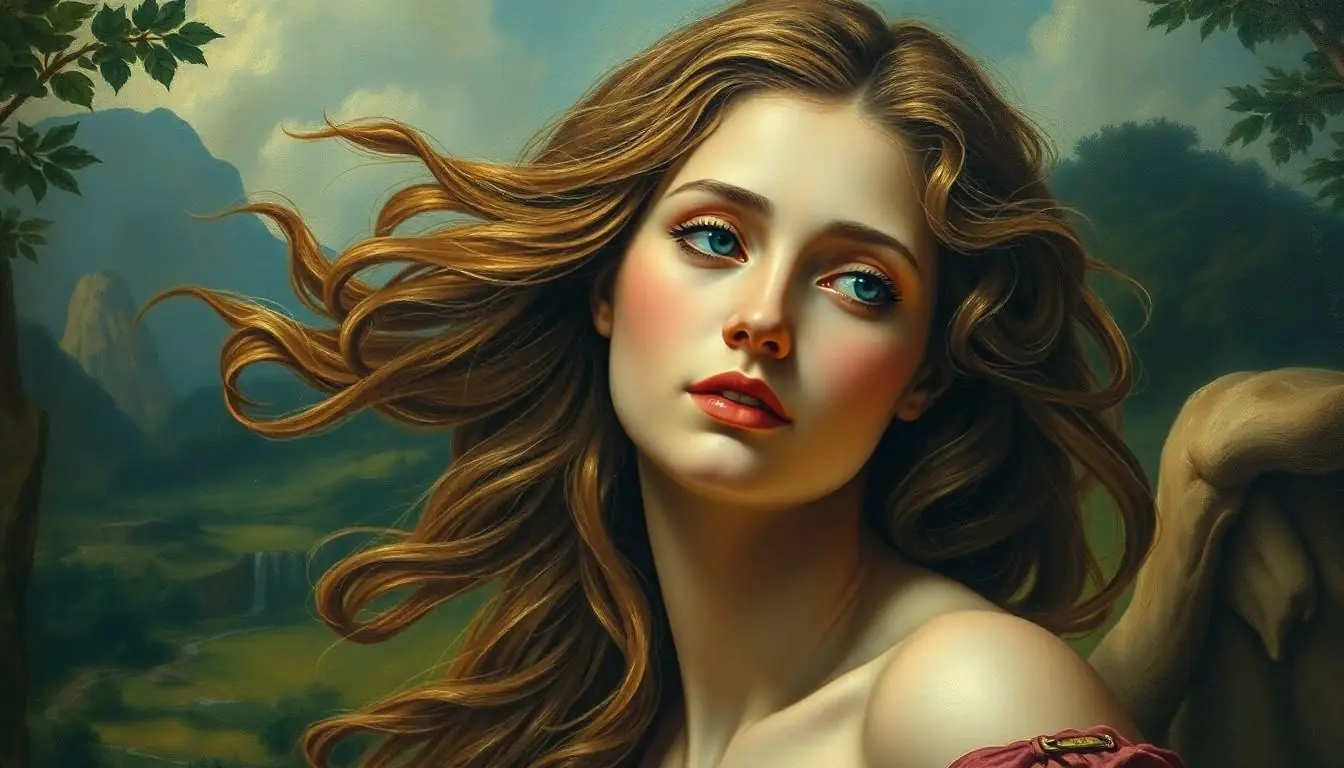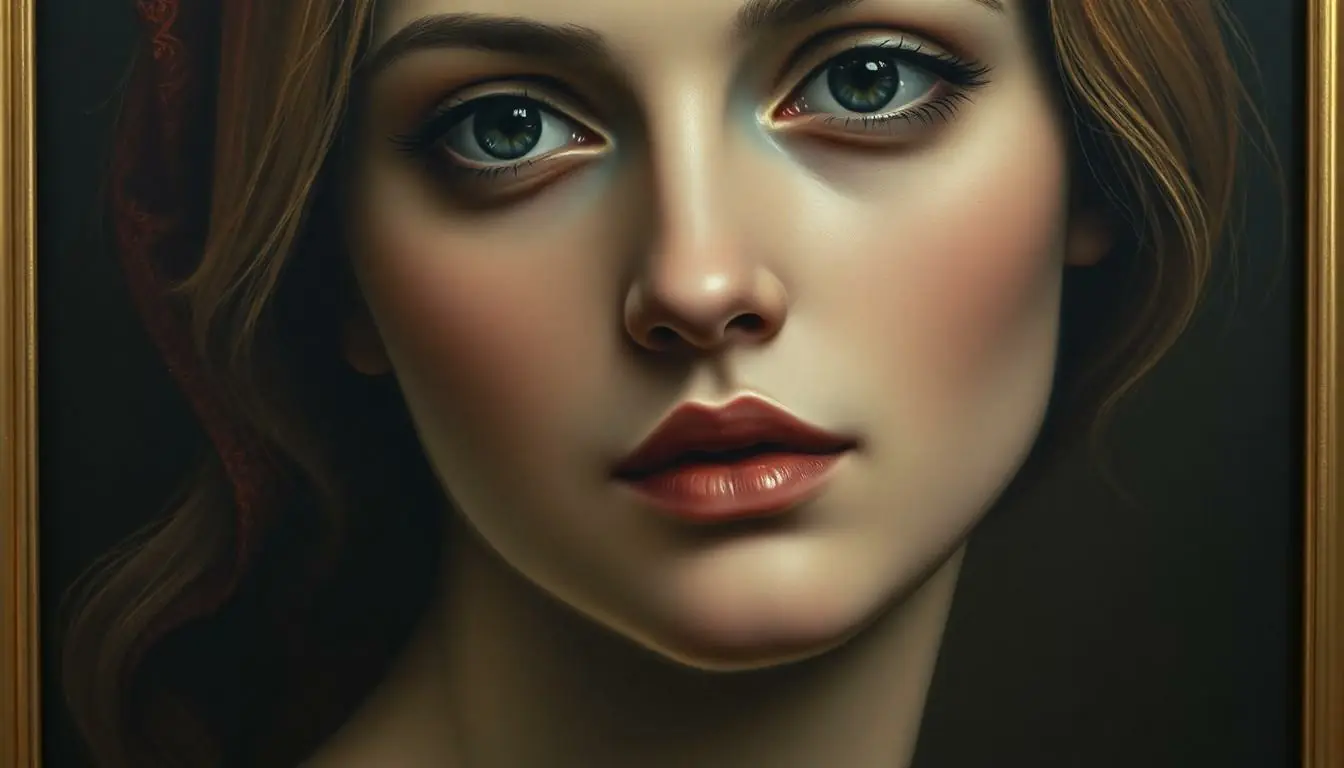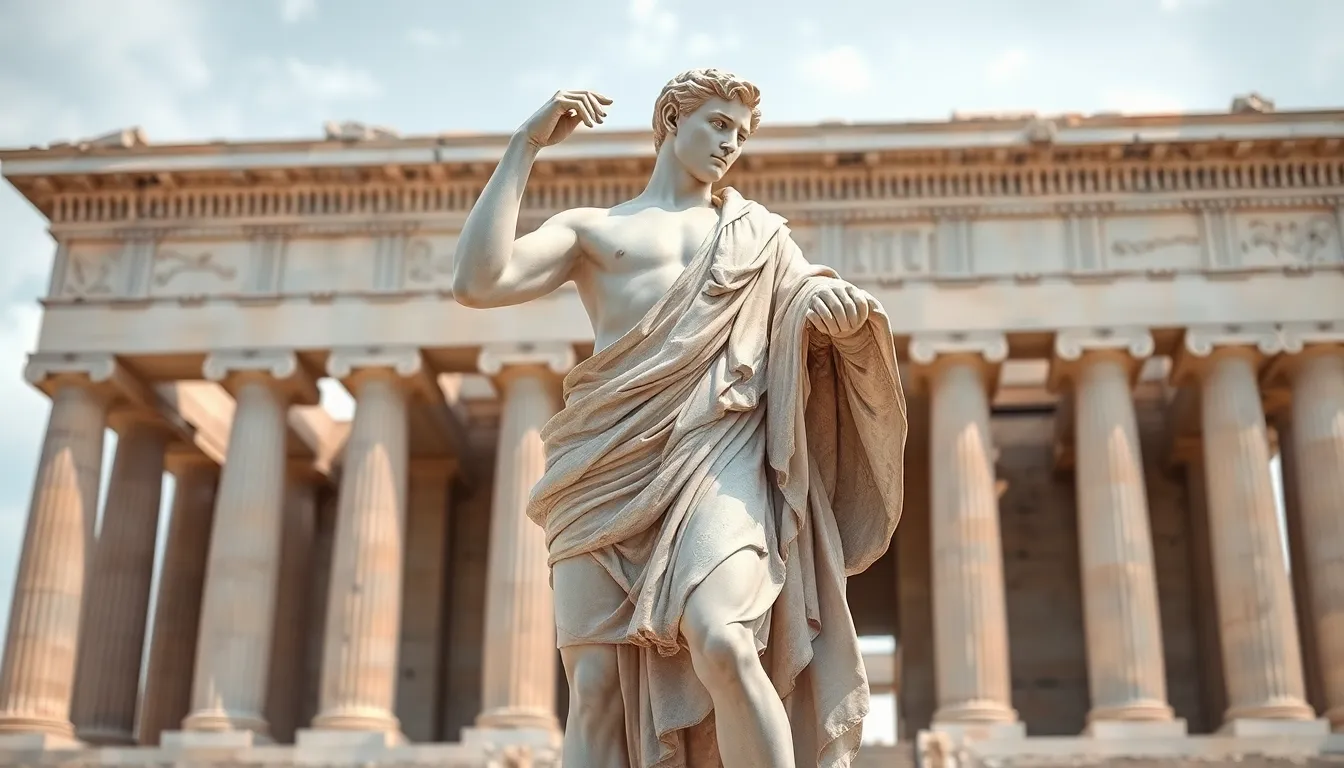Step into the enchanting world of classical art, where women’s faces have graced canvases for centuries, captivating viewers with their beauty and mystery. From the serene smile of the Mona Lisa to the dramatic gaze of Lady Agnew, these iconic portraits have a way of making you wonder what secrets lie behind those painted eyes.
But let’s be honest—who wouldn’t want to stare at a masterpiece while sipping their morning coffee? These paintings aren’t just pretty pictures; they’re windows into history, culture, and the ever-elusive female experience. So grab your beret and prepare to explore the timeless allure of women in classical art, where every brushstroke tells a story and every glance could inspire a sonnet—or at least a really good Instagram post.
Table of Contents
ToggleOverview of Classical Art
Classical art encompasses a rich tapestry of styles and techniques developed primarily from ancient Greece and Rome to the Renaissance. Icons of beauty and form emerge from this era, reflecting both the ideals and the complexities of their time. Major artists, including Leonardo da Vinci, Michelangelo, and Raphael, shaped this artistic movement, focusing heavily on humanism.
The portrayal of women in these paintings often reveals intricate narratives about gender and society. For instance, the famed Mona Lisa captivates audiences not just with her enigmatic smile but also with her embodiment of the Renaissance ideals of beauty and grace. Lady Agnew’s portrait by John Singer Sargent showcases the elegance and poise of its subject, highlighting the skillful brushwork and attention to detail.
Many classical paintings serve as historical documents, capturing the attire, customs, and social roles of women across various periods. While the subjects often reflect societal views, they also introduce individual stories and emotions. Artists exercised profound control over their compositions, inviting viewers to connect with the characters within the frames.
Understanding these works requires an appreciation of the context in which they were created. Artistic conventions, materials, and cultural influences shape the representations of women, and each piece opens a dialogue with the past. Consequently, the study of classical art illuminates not only the aesthetic values but also the evolving perspectives on femininity through the ages.
Importance of Women’s Faces in Art

Women’s faces in classical art carry profound significance. They symbolize beauty, emotion, and the complexities of the female experience.
Symbolism and Representation
Symbolism plays a crucial role in the depiction of women. Artists often use female figures to represent virtues like wisdom, love, and fertility. Many paintings, such as Botticelli’s “The Birth of Venus,” illustrate idealized beauty and mythological themes. Such portrayals highlight cultural values and societal norms during their creation. Representation also extends to the narrative behind each face, revealing individual stories or types of womanhood. The diversity in these depictions provides insight into historical attitudes towards women, transcending mere aesthetics to convey deeper meanings.
Artistic Techniques and Styles
Artistic techniques enhance the portrayal of women in paintings. Use of chiaroscuro creates dramatic contrasts, emphasizing features and adding depth to the subjects. Masters like Leonardo da Vinci employed sfumato, a technique that softens outlines to create lifelike faces. Brushwork varies from smooth finishes to expressive strokes, influencing how viewers perceive emotion and identity. The incorporation of different styles across eras, such as Baroque or Impressionism, showcases the evolution of women’s representation. Details in clothing, posture, and expression contribute to each painting’s unique narrative, providing layers of interpretation that resonate with audiences.
Notable Artists and Their Work
Numerous artists have crafted remarkable paintings featuring women’s faces, each bringing unique styles and perspectives.
Leonardo da Vinci
Leonardo da Vinci stands among the most influential artists of the Renaissance. His artwork “Mona Lisa” captivates audiences with an enigmatic smile and detailed expression. Da Vinci employed techniques such as sfumato to create soft transitions and lifelike qualities. The painting encapsulates ideals of beauty and mystery, making it an enduring symbol of Western art. His exploration of women’s psychology resonates deeply, presenting them as complex and multifaceted figures within societal contexts.
Gustav Klimt
Gustav Klimt is renowned for his distinctive style and captivating depictions of femininity. His famous piece “The Kiss” features a couple entwined in a golden embrace, but his portrait “Portrait of Adele Bloch-Bauer I” specifically highlights the intricate portrayal of women. Klimt’s use of lavish gold leaf accents and ornamental patterns creates a sensory delight. These elements reflect themes of love, sensuality, and beauty while simultaneously addressing women’s roles and identities in early 20th-century society.
Frida Kahlo
Frida Kahlo’s work offers profound insights into women’s experiences and emotions. Her self-portraits unflinchingly explore identity, pain, and resilience. In pieces like “Self-Portrait with Thorn Necklace and Hummingbird,” Kahlo displays vulnerability while showcasing her strength. Vibrant colors and symbolic elements populate her art, creating a vivid narrative of her life and struggles. Kahlo’s focus on her own face and form allows viewers to confront the complexities of womanhood, marked by her heritage and personal challenges.
Analyzing Iconic Paintings
Iconic paintings reveal deeper narratives about women in art. Each masterpiece captures the essence of its subject through distinct styles and techniques.
“Mona Lisa” by Leonardo da Vinci
“Mona Lisa” embodies the Renaissance ideal through its enigmatic smile. Leonardo portrays femininity with lifelike qualities and subtle expressions. Attention to detail highlights the serene background, enhancing the subject’s mystery. This painting reflects complex emotions, inviting viewers to interpret her thoughts. Cultural context showcases women’s roles in 16th-century society, making it a timeless icon.
“The Kiss” by Gustav Klimt
“The Kiss” captivates with its lavish gold accents and intricate patterns. Gustav Klimt explores themes of love and intimacy between the figures. The intertwined forms symbolize connection and vulnerability, reflecting early 20th-century ideals of femininity. Soft lines and bold colors deliver emotional resonance, illustrating the beauty of the moment. Klimt’s unique style transforms the portrayal of women into a celebration of their complexities.
“Self-Portrait with Thorn Necklace and Hummingbird” by Frida Kahlo
Frida Kahlo’s “Self-Portrait with Thorn Necklace and Hummingbird” highlights personal identity and resilience. Vibrant colors and symbolic elements convey her emotional struggles. Kahlo confronts themes of pain and strength, using her own face as a canvas. Contrasting imagery emphasizes her unique experience as a woman in a patriarchal society. This work invites viewers to connect with her story on a profound level.
Cultural Impact of These Works
Classical paintings featuring women’s faces significantly influence cultural perceptions and artistic traditions. Iconic works like the Mona Lisa and Lady Agnew illustrate beauty and mystery, sparking discussions on femininity across centuries. Artistic representations of women often serve as reflections of societal standards and evolving attitudes toward gender roles.
Debates around these artworks provide insights into women’s representation historically. Topics such as virtue, wisdom, and the female experience resonate across cultures. Artists employed symbolism to convey deeper meanings, enhancing the emotional connection between the viewer and the subject. Botticelli’s figures, for instance, epitomize beauty and fertility, showcasing how art mirrors the values of its time.
In addition to thematic explorations, technical elements also enhance the cultural impact of these masterpieces. Chiaroscuro and sfumato techniques bring depth to characters, engaging viewers on multiple levels. Variations in artistic styles signal shifts in societal perspectives, as evident from the transition between Renaissance and Baroque art.
Among modern audiences, these paintings continue to inspire appreciation and analysis. They foster discussions on identity and representation, particularly for contemporary women. Klint’s ornate approaches amplify themes of intimacy and emotion, while Kahlo’s vibrant expressions challenge traditional narratives surrounding womanhood.
Overall, classical art’s portrayal of women influences both artists and viewers alike. Each masterpiece invites individuals to recognize the multifaceted narratives woven into women’s representation, ensuring these works remain relevant and thought-provoking in today’s discourse.
Classical art’s portrayal of women’s faces continues to captivate and inspire. These iconic paintings not only showcase beauty but also invite viewers to engage with the rich narratives behind each subject. From the enigmatic smile of the Mona Lisa to the emotional depth found in Frida Kahlo’s self-portraits, each artwork reflects evolving societal attitudes and the complexities of femininity.
As audiences explore these masterpieces, they uncover layers of meaning that resonate across time. The interplay of artistic techniques and cultural symbolism enriches the understanding of women in art, making these works timeless treasures. The ongoing dialogue about identity and representation ensures that classical art remains a vital part of contemporary discussions, affirming its lasting impact on both artists and viewers alike.





